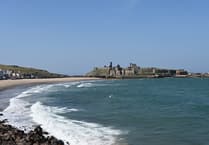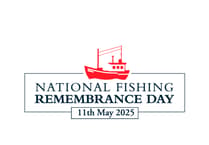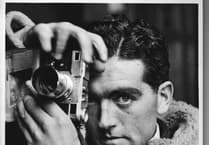The Isle of Man has a rich history of traditional folk music, dance and tales. Manx music officer Chloe Woolley takes a look at some of the stories that lie behind some of the best-known songs.
The all-time king of Celtic gatherings, Festival Interceltique de Lorient, was first held 50 years ago this year.
Unfortunately, Covid-19 put paid to planned celebrations. Instead, the 800,000 people who would usually flock to the Breton town for 10 days each August, tuned in for online archive footage broadcast on France 3 TV channel.
In the Isle of Man, the current delegate Grainney Sheard invited musicians and dancers to share some of their memories on the Isle of Man/Mannin Facebook page.
A click on it conjures up memories of the ear-splitting sound of bombardes, the spectacle of thousands of dancers and musicians in traditional costume, fest-noz dancing into the early hours, Breton cidre and crepes, the unwelcome sound of Scottish pipers practising at 5am and the agonisingly long coach and ferry journeys it takes to get there and back.
The festival was founded in 1971 in a bid to forge links between Brittany and the other Celtic nations and to revive the local economy.
The submarine base of Lorient was heavily bombed in the Second World War and was still trying to recover.
The Isle of Man took part in its first year, albeit by accident. Fiddle player Mick Kneale (Calor Gas Ceilidh Band) was on a family holiday near Lorient when they discovered a flyer for the event on their car windscreen.
Spotted carrying instruments, Mick and his guitarist friend found themselves on stage at the Palais de Congrès representing the Isle of Man and sharing a dressing room with non-other than the Dubliners.
In the early days, the Manx delegation was led by Colin and Cristl Jerry, of Peel.
The baton has been passed to various others since and hundreds of performers have made the long journey.
Some of those who come to mind include Brian Stowell, Ruth Keggin, Annie Kissack, Mera Royle, Bock Yuan Fannee, Ny Fennee, Rushen Silver Band, Cair Vie, Aeg Threshlyn and Caarjyn Cooidjagh.
In recent years, King Chiaullee, Barrule and Nish as Rish have clinched the festival’s top music award, Trophée Loïc Raison, for the Isle of Man.
A trip to Lorient in the early days inspired Mike Boulton to write the tune, ’Manninagh ayns Britaan Beg’ - ’Manxman in Brittany’ and 30 years later Cesar Joughin wrote the tune, ’The Breton-Manx Air’.
Many friendships have developed over the five decades.
Yn Chruinnaght welcomes Breton performers each year and provides the pre-Lorient launch pad for that year’s chosen acts.
It also fosters new collaborations such as ’Neear Nesin’ (2019), featuring David Kilgallon and Mera Royle alongside two well-known Breton musicians, Lors Landat and Thomas Moisson.
For the past decade, Culture Vannin has organised the Manx Pavilion with the support of the IoM Arts Council and Visit Isle of Man.
In 2015, for the first time ever, the Isle of Man was the honoured nation alongside Cornwall.
This high-profile opportunity saw a proud delegation of more than 100 musicians, singers, dancers, poets and artists showcase our cultural heritage, delivering 95 hours of live entertainment.
The Isle of Man demonstrated it could punch above its weight and special moments included a beautifully choreographed music and dance show which earned a standing ovation and was repeated back home to a sold-out Gaiety Theatre under the guise of ’Manannan’s Isle’.
Manx dance has always enthralled Lorient audiences, and the women’s dance ’Shooyl Inneenyn’ went down well at the festival last year, performed by Skeddan Jiarg.
The dance melody is the theme of this month’s guitar tutorial from Culture Vannin, which can be found at www.culturevannin.im





Comments
This article has no comments yet. Be the first to leave a comment.